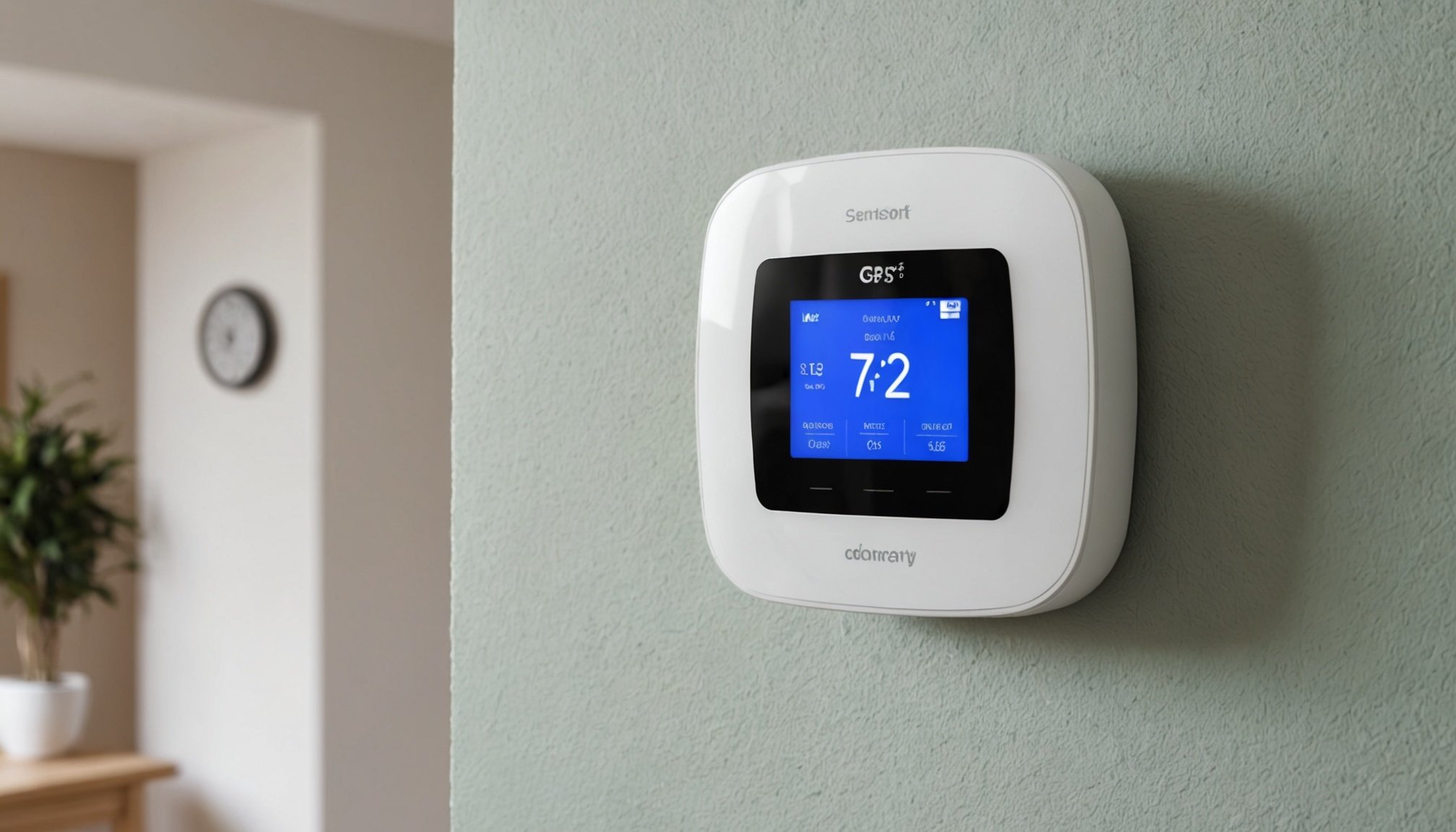Smart thermostats have revolutionized energy management, especially for UK households striving to cut costs and reduce their carbon footprint. These devices provide not just automation but also advanced insights into usage patterns, enabling you to optimize every degree. This guide explores the best smart thermostat options available, offering practical tips for installation and integration. Discover how making this simple upgrade can lead to significant savings and a more sustainable home. Your journey toward energy efficiency starts here.
Understanding Smart Thermostats
Smart thermostats are innovative devices designed to manage your home's heating and cooling systems more efficiently. Unlike traditional thermostats, smart thermostats can be controlled remotely via a smartphone app, allowing users to adjust settings from anywhere. This feature is particularly useful for those who want to optimize energy usage or adjust their home's temperature while away.
A lire en complément : Can smart window blinds help reduce heating costs in the UK winter?
In the UK market, there are various types of smart thermostats available. Some of the most popular include learning thermostats that adapt to your schedule over time, and geofencing thermostats that adjust settings based on your location. There are also programmable thermostats that allow you to set specific temperatures for different times of the day.
When choosing a smart thermostat, consider key features such as compatibility with your existing HVAC system and ease of installation. Look for models that offer voice control through smart home assistants like Alexa or Google Assistant, as this can greatly enhance convenience. Energy reports and usage insights are also valuable, providing data to help you understand and reduce your energy consumption.
A voir aussi : Ultimate Guide to Sustainable Kitchen Renovation in the UK: Eco-Friendly Tips & Ideas
By selecting the right smart thermostat, homeowners can enjoy enhanced comfort, reduced energy bills, and a more environmentally friendly home. Understanding these basics is crucial for making an informed decision.
Installation and Setup
Installing a smart thermostat can be a rewarding DIY project, but it's essential to approach it with care. Here's a step-by-step guide to help you through the smart thermostat installation process:
-
Turn Off Power: Begin by switching off the power to your HVAC system to ensure safety. This can typically be done at your circuit breaker.
-
Remove Old Thermostat: Carefully detach the existing thermostat, making sure to label the wires as you disconnect them. This will aid in connecting them to the new device.
-
Mount the New Thermostat: Position the backplate of your smart thermostat on the wall, ensuring it is level. Use the screws provided to secure it.
-
Connect the Wires: Attach the labeled wires to the corresponding terminals on the new thermostat. Double-check the connections to avoid issues.
-
Power Up and Configure: Restore power to the HVAC system and follow the manufacturer's instructions to configure your thermostat via the app.
Common challenges include wiring confusion or connectivity issues. If you encounter problems, consult the thermostat manual or seek online troubleshooting tips. While DIY installation is possible, professional installation can ensure optimal performance and peace of mind, especially if you're unfamiliar with electrical systems.
Energy-Saving Techniques
Maximizing energy efficiency with a smart thermostat involves strategic programming and scheduling. By setting your thermostat to lower temperatures during the night or when the house is unoccupied, you can significantly reduce energy consumption. Many users find that programming their device to follow a consistent schedule optimises performance and comfort.
Utilizing Advanced Features
Smart thermostats often come equipped with features like geofencing and learning algorithms. Geofencing uses your smartphone's location to adjust the temperature automatically when you leave or approach your home. This ensures that energy is not wasted on heating or cooling an empty house. Meanwhile, learning algorithms adapt to your habits over time, creating a customised schedule without manual input. These technologies work together to enhance energy efficiency seamlessly.
Real-Life Impact
Real-life examples highlight the potential savings. For instance, a household using a learning thermostat reported a 15% reduction in their energy bills over a year. Another family utilised geofencing to ensure their home was only heated when occupied, leading to a noticeable decrease in energy usage. These case studies demonstrate that with the right approach, smart thermostats can lead to significant cost savings and a reduced environmental footprint.
Brand Comparisons and Reviews
When diving into Smart Thermostat Reviews, it's essential to consider the leading brands in the UK market. Nest, Hive, and Tado stand out among the top contenders, each offering unique features and benefits.
Overview of Top Brands
- Nest: Known for its sleek design and learning capabilities, Nest adapts to your schedule and preferences over time, making it a popular choice for those seeking automation.
- Hive: Offers robust compatibility with various smart home systems and provides intuitive controls through its app, enhancing user convenience.
- Tado: Specialises in geofencing and multi-room control, allowing for precise temperature management across different areas of the home.
User Reviews and Feedback
Users often praise Nest for its ease of use and energy-saving potential, while Hive is lauded for its seamless integration with existing smart home setups. Tado receives high marks for its geofencing capabilities, which users find particularly effective in reducing energy waste.
Comparative Analysis
In terms of pricing, Nest tends to be on the higher end, reflecting its advanced features. Hive offers a more mid-range option, while Tado provides a competitive price point with a focus on energy savings. Each brand presents distinct advantages, making it crucial to assess personal needs and budget when selecting the right smart thermostat.
Understanding Regional Regulations and Incentives
Navigating the landscape of UK Energy Regulations can be crucial for homeowners aiming to optimise their energy efficiency. In the UK, energy efficiency regulations focus on reducing carbon footprints and promoting sustainable living. These regulations often mandate minimum energy performance standards for homes, encouraging the adoption of energy-efficient technologies, such as smart thermostats.
The government provides various incentives to support energy-efficient upgrades. Homeowners can benefit from schemes like the Green Homes Grant, which offers financial aid for installing energy-saving measures. Such initiatives not only make homes more eco-friendly but also help reduce energy bills over time.
To fully leverage these opportunities, it's essential to stay informed about available resources. Several platforms offer guidance on energy-saving initiatives, including the Energy Saving Trust and local government websites. These resources provide comprehensive information on how to make the most of available incentives and ensure compliance with energy regulations.
By understanding and utilising UK Energy Regulations and government incentives, homeowners can significantly enhance their home's energy efficiency. This proactive approach not only contributes to environmental conservation but also results in tangible financial savings.











